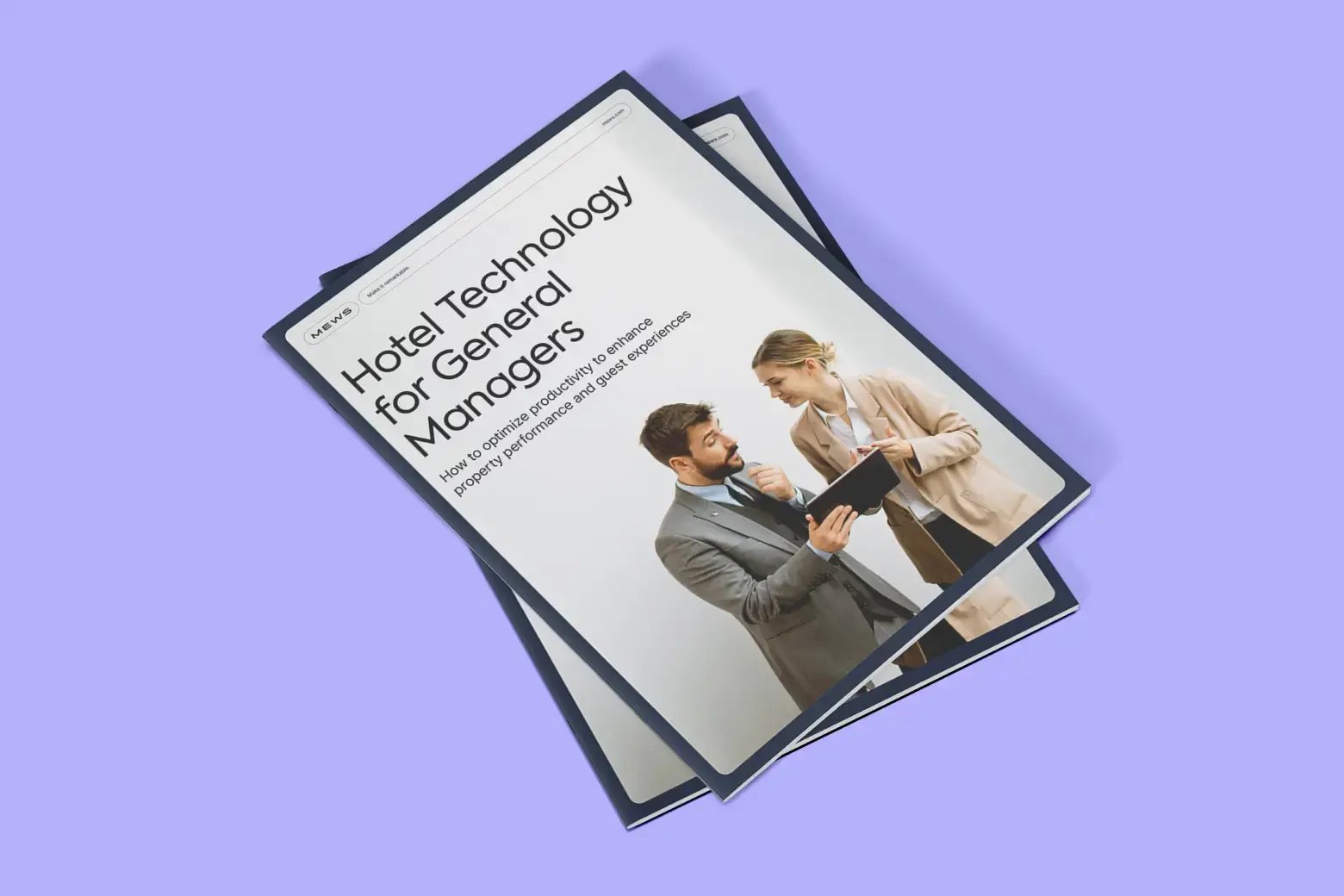The future of hospitality belongs to hoteliers who embrace innovative immersive technology. Hotels that seamlessly intertwine technology to revolutionize the guest journey will find ways to stand apart from their competitors.
Technology can be the key to delivering personalized and remarkable guest experiences.
Let's explore how immersive tech can affect the hospitality industry and contribute to your hotel's bottom line.
Table of contents
Understanding the impact of immersive tech on hospitality
Differentiation lies at the heart of a hotel's success. Immersive tech can redefine how guests experience and engage with your brand. This kind of technology goes beyond the traditional approach to the customer journey, redefining guest interactions across all touchpoints.
Immersive technology can complement your engagement strategy, enhancing every guest interaction – from browsing your website to checking in.

Benefits of adopting immersive experiences in hospitality
There are many benefits to adopting immersive technology to drive hotel experiences. It can improve how you offer information, reducing the stress on the front desk. It also allows you to provide real-time information about the weather, local attractions and events, which can drive incremental revenue.
This technology can drive more operational efficiency. Many hotels use VR and AR to improve service delivery, help streamline processes, and improve the quality and interactivity of staff training. Immersive simulations let staff take part in realistic training scenarios, such as handling emergencies. Read more about improving front desk operations.
Practical Applications of Immersive Technology for Hotels
Augmented reality, virtual reality, and mixed realities can be a fantastic addition to a hotel experience. They help you connect with future customers, expand the realm of your brand journey for existing clientele, and help turn guests into loyal clients. Metaverse already offers guest experiences in the virtual world, allowing travelers to engage with your brand outside of the tangible hotel experience.
Let’s look at some more of the other applications.
Immersive room previews
Use immersive room previews and facility tours to create an interactive way to show guests around the property. They can preview different room options and get to know the property before visiting. It's a perfect opportunity to upsell because guests will see the benefits of upgrading to a premium room.
By seeing what the room looks like, guests can make more informed decisions depending on their needs and preferences. And that's how you keep guests happy – empower them to make the best choices.
Gamification
Gamification is a fun way to add a layer of playfulness to the hotel experience. It can also help boost ancillary revenue by showcasing your amenities and added services. You can design different AR games, like a treasure hunt around the hotel, to encourage guests to explore the areas they might not visit otherwise.

Information distribution
Imagine a virtual concierge created with augmented reality that gives guests all the information they need – places of interest, restaurants, bars, events, and activities. You can update your virtual concierge daily to provide the most up-to-date information while taking the pressure off the front desk.
It can even give directions and point out landmarks in different languages. It’s a fun and dynamic way to surpass the language barrier and communicate with guests from around the world.
Dynamic restaurant menus
You can use AR in your hotel restaurant to visually represent the dishes. Food images will pop up from guests’ smartphones or tablets, letting them see what the menu items look like. This also helps reduce the amount of food waste by dropping misaligned expectations.
Create evening activities
While many guests want to go out and experience first-hand what the surrounding area has to offer, virtual reality can give them more information about what they’ve already seen. For example, you can create evening activities that explain the history of your hotel and its “making-of” story. Some hotels use virtual goggles for such tours.
Video mapping on the rooftop will make the space more dynamic and encourage guests to visit your bar. On-site activities with immersive technology inspire guests to stay at the hotel instead of going out and spending their money elsewhere.
Staff training
You can use VR to improve staff training, preparing them for diverse real-life situations. The good news is that VR lets staff complete the training at any time. It's also less disruptive to operations and flexible – the front desk can train for emergency preparedness or handling angry guests while restaurant staff can watch cooking demos.
You can also use VR training to work on soft skills. Staff can face real-life scenarios, and you can see their reaction in a controlled setting. Based on the results, you can create specific soft skills training courses designed to work on areas that could use some improvement.
Conclusion
Immersive technology in the hospitality sector represents a sea change that sets new standards and redefines guest experiences. Virtual and augmented realities can open hotels up to new ways to captivate guests and engage them with personalized experiences. By implementing ideas from this article, hotels can deliver memorable, highly tailored experiences.
This technology type improves operational efficiency, too, allowing you to position your hotel at the forefront of innovation. It can help transform the hospitality experience into more than just a night’s stay – an immersive and unique journey.

Author
Eva Lacalle
Eva has over a decade of international experience in marketing, communication, events and digital marketing. When she's not at work, she's probably surfing, dancing, or exploring the world.

Essential hotel technology for general managers
Download now
Hospitality hot takes straight to your inbox


.webp)